I’m sure everyone at some point looks back and remembers attending certain live performances by legendary actors, musicians, comedians, writers or, some other talented person or group. I remember being in Las Vegas with my family in 1972 sitting in the showroom at Caesars Palace for one of Jimmy Durante’s shows. I was also lucky to see one of Andrés Segovia’s last solo performances. How about those of you who were in attendance at Woodstock in August 1969?
One of the most memorable shows I attended was performed in complete silence. Not one word was said, and you could hear a pin drop. In fact, there was only one person on stage for the entire two-hour show and Marcel Marceau never spoke.
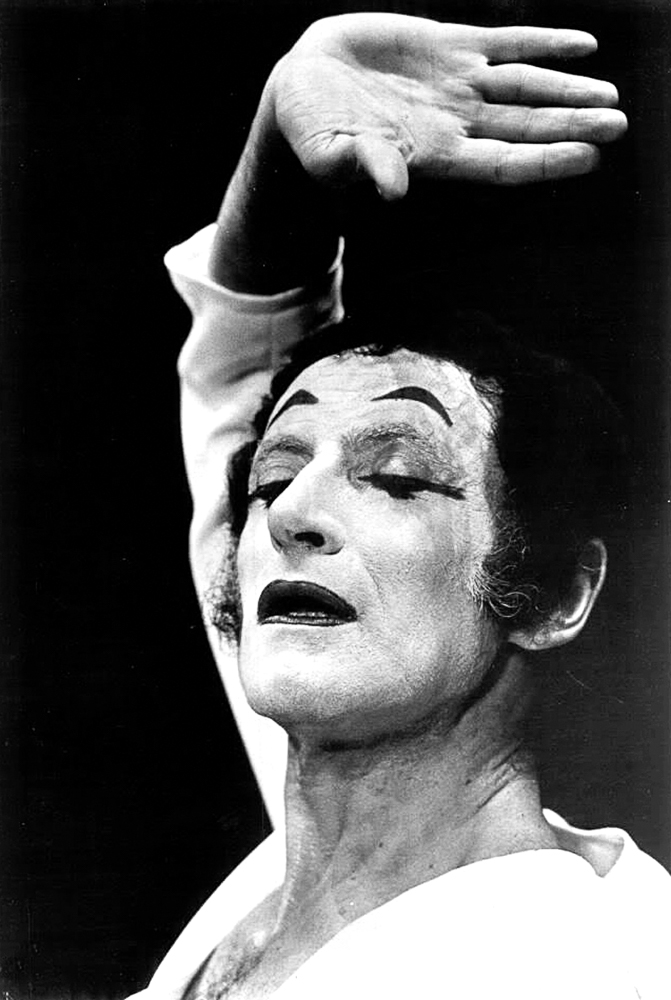
Did You Know?
Did you know why women in Singapore (and presumably other Asian countries) keep themselves covered from head to foot in extremely hot and humid weather? Our guide told us they don’t want to get a tan because in their culture, it is preferable to have very pale skin. This got me thinking back to the Elizabethan Age in England. Nobility during that time valued fair and pale skin to the point where some went to the extreme of making sure their skin was white ⏤ really white. They used a poisonous lead based white paint and over time, their skin was eaten away. That called for more make-up and so, a vicious cycle began.
Since we’re talking about the Elizabethan era, did you know that refined sugar was only available to the wealthy back then? One of the results was that people had rotten teeth. Ironically, rotten teeth became a status symbol for the wealthy since it identified them as being rich ⏤ another vicious cycle.
Thank goodness Marcel Marceau had modern make-up which did not contain lead. I’m not sure about his teeth.
Let’s Meet Marcel Marceau
Marcel Mangel (1923-2007) was born in Strasbourg, France to a Jewish family. His parents, both butchers, came from Poland and the Ukraine. The family was rounded out with Marcel’s older brother, Alain (1921-?). When Marcel was five, his mother took him to see one of Charlie Chaplin’s silent films and that experience influenced his decision as a teenager to become a mime (decades later, Michael Jackson would credit Marcel Marceau for the inspiration behind many of his dance routines including the iconic “moonwalk”). At a very young age, Marcel was entertaining the neighborhood children and Alain always said that Marcel had an insatiable appetite to perform. As part of his education, Marcel learned to speak fluent English and German (in addition to French, his native tongue). The languages and his talent as a mime would save the lives of many children during the German occupation of France.
Michael Jackson meets Marcel Marceau. Watch them perform together here.
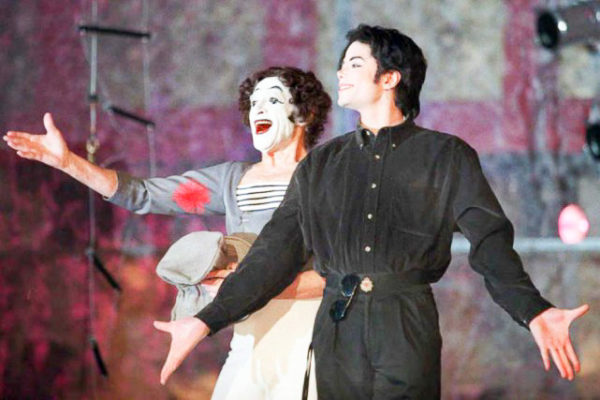
German Occupation of France
The German army invaded France in May 1944 and by 14 June, they had entered Paris. The armistice called for the country to be divided into two sections: The Occupied Zone and the Free or Unoccupied Zone where the Vichy government set up shop. Shortly after the Nazis marched into Strasbourg, the city’s Jewish residents were given two hours to pack up and leave. The Mangel family moved to Limoges located in the Free Zone where Jews were not persecuted by the Germans (at least until late 1942). As a sixteen-year-old, Marcel along with Alain joined the French Resistance in Limoges. By this time, Marcel and Alain had adopted a new name: Marceau (the name of a young French general during the French Revolution). This became their nom de guerre during the war and afterwards, their last name. Marcel’s job was to forge the identification cards of French males by lowering their ages so they wouldn’t be shipped off to German labor camps. However, it soon became necessary for Marcel to take on more dangerous work.
Marcel began to accompany Jewish children to the Swiss border where he’d turn them over to someone else who would lead them over the Alps to the safety of neutral Switzerland. Once, he dressed up as a Boy Scout leader with the children dressed in scout uniforms and led twenty-four “scouts” to the border. One of his tactics was to teach the children how to mime. This kept them quiet. Another time, Marcel was leading a group when they came upon a group of German soldiers. He convinced them he was a French soldier and demanded they surrender. All thirty soldiers did just that. Marcel is credited with saving the lives of at least seventy children.
During 1944, Marcel’s father was deported to Auschwitz and murdered. Alain was known to the local Gestapo and his face was plastered on a wanted poster. The resistance leaders knew that Limoges was too dangerous for the young résistant and Marcel was sent back to Paris and registered himself at one of the theatrical schools under the last name of Marceau (he hoped this might hide the fact he was Jewish).
As the Allied armies marched towards Berlin, Marcel was already a member of the Free French Forces commanded by General Charles de Gaulle. Because of his language skills, Marcel was used as a liaison officer to General Patton. Marcel’s first performance after the liberation of Paris was to entertain the men and women of Patton’s Third Army.
Bip the Clown
After the liberation, Marcel continued his acting studies but soon made the decision to concentrate on mime despite the ridicule of his fellow students. He studied L’art du silence (the art of silence) under the master mime, Étienne Decroux.
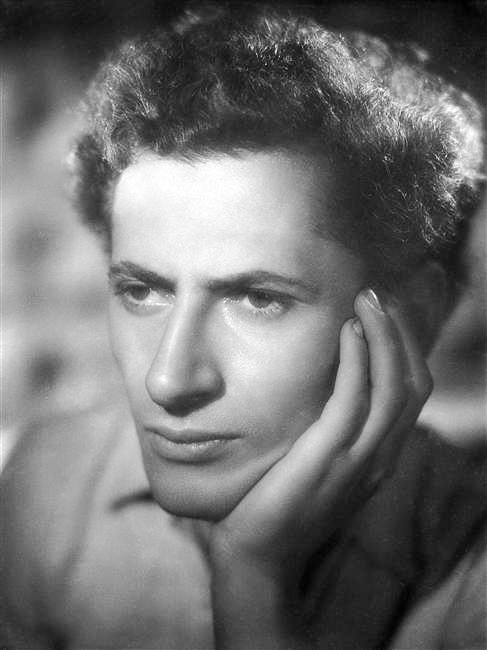
Marcel was soon acting with one of France’s favorite theater companies and two years after the end of the war, at the age of twenty-four, Marceau created his alter-ego, Bip the Clown, much as Chaplin had created “The Tramp” when Marcel was a child. The following year, Marcel formed his own mime company. For the next twelve years, Marcel wrote, directed, and performed twenty “mimodramas” including, Bip as a Skater. Watch “Bip the Skater” here. Bip comes from the character Pip in Great Expectations by Charles Dickens. Marcel was fond of saying that in his twenties, he had great expectations.
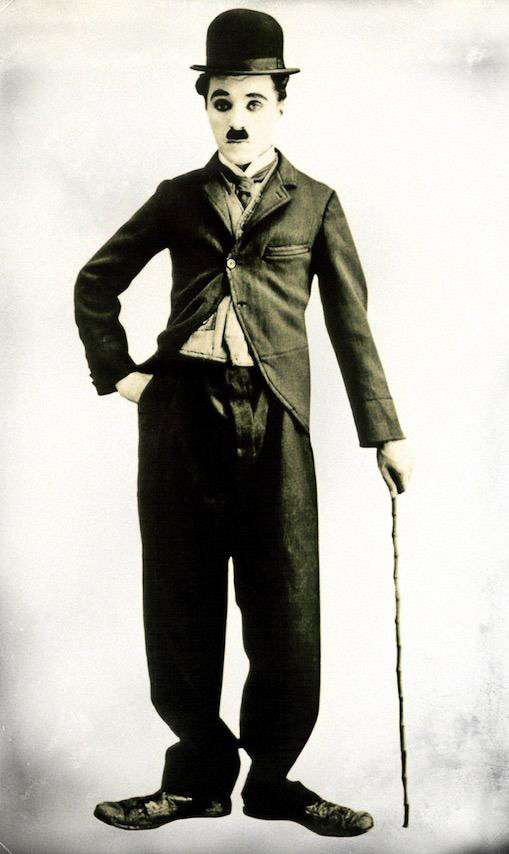
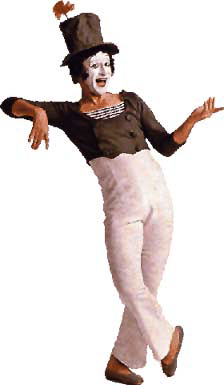
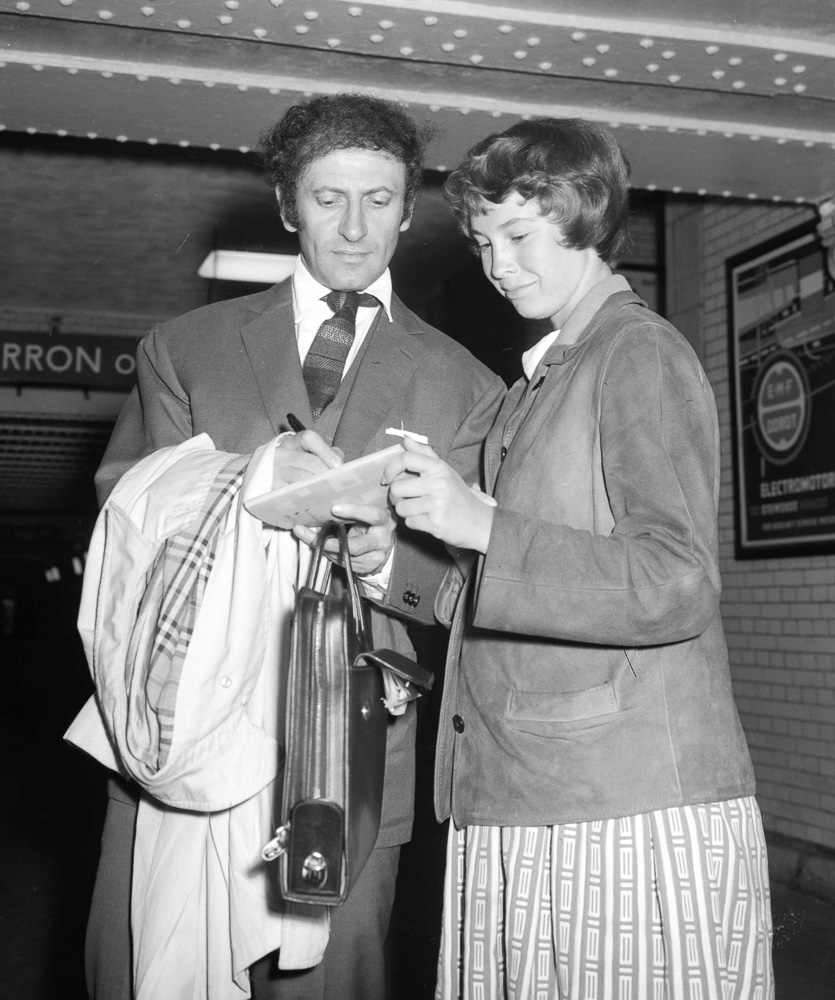
Marcel embarked on his first American tour in 1956 and by the 1960s, he was a frequent guest on American television shows hosted by the likes of Sid Caesar, Red Skelton, and Dinah Shore. When he went on the popular talk shows such as Dick Cavett, David Frost, and Johnny Carson, his American audience ballooned. Marcel began performing at universities and auditoriums in both large and small cities. The story goes that Marcel Marceau was “discovered” by the comedy team of Laurel and Hardy.
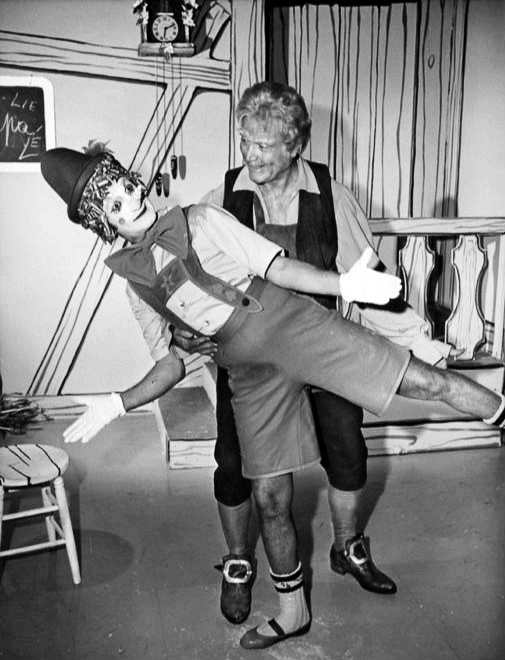
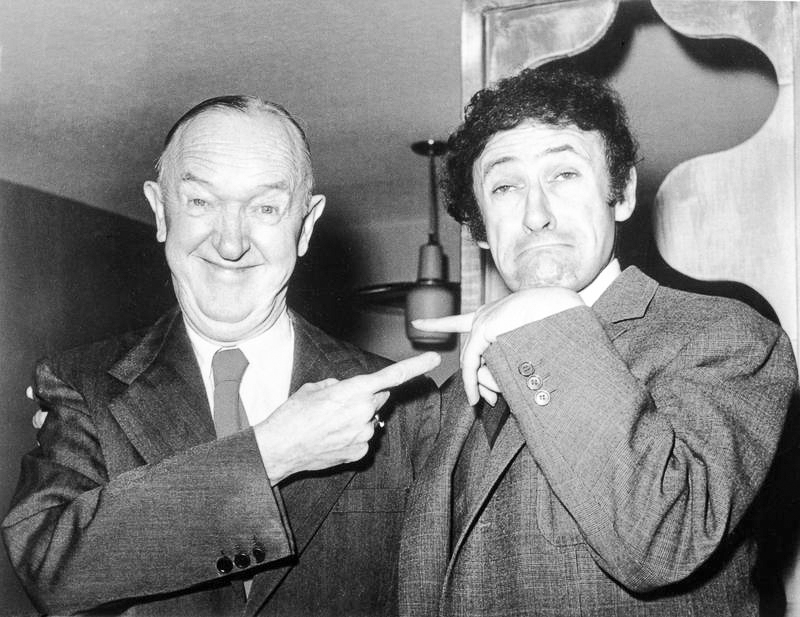
Mel Brooks wrote, directed, and acted in the 1976 movie, Silent Movie. It featured a “who’s who” of performers including Marcel Marceau. The entire movie was silent (it had sub-titles) except for one scene. Brooks phones Marceau to ask him to be in the movie and Marceau responds with an enthusiastic, “Non.” It was the only word spoken in the movie (classic Mel Brooks). Watch a short clip here.
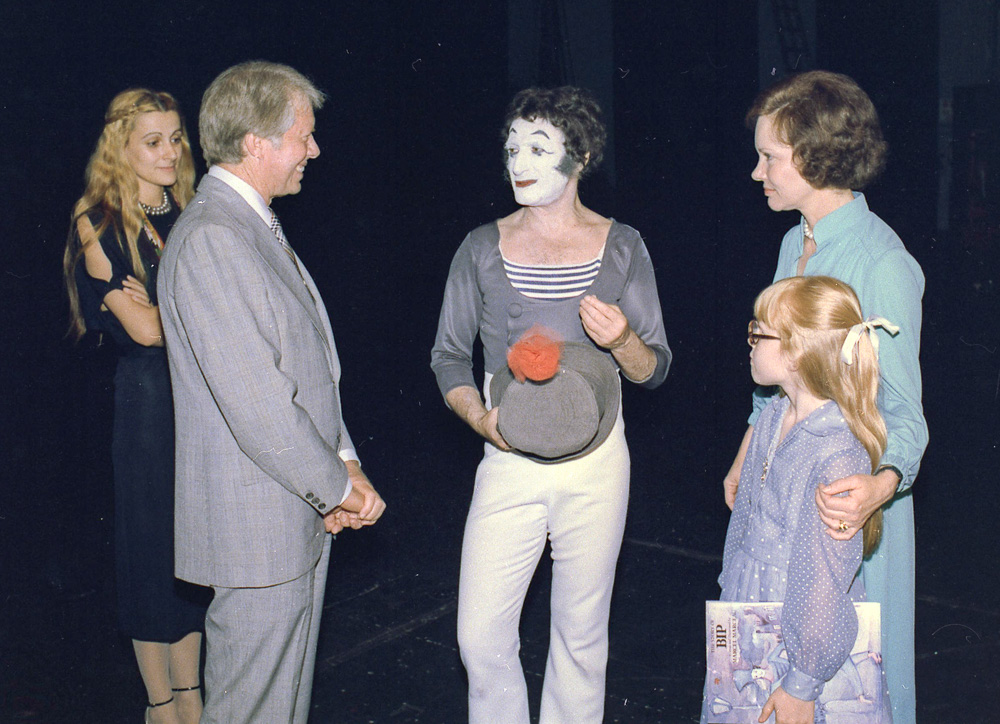
Marcel’s last American tour was in 2004 at the age of eighty-one. His philosophy of performing was “If you stop at all when you are seventy or eighty, you cannot go on. You have to keep working.”
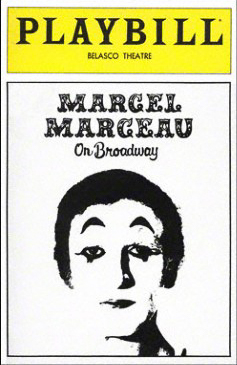
Marcel Prefers Insane to Drunk
Marcel founded a mime school in Paris in 1969. He told stories about the crazy people who would follow him. One woman wrote him a letter every day for years and twice a week would send him a nude photo of herself. I guess it was the forerunner to sexting? Another would run after him while nude begging him to have a baby with her. Marcel once said of them, “… the fools and crazy people I have attracted. My art attracts the rejected, the outcasts. Through mime they find a certain identity they have lost. On stage I express the inner person, and if an insane person can come to my show day after day and assimilate it, there must be a kernel of sanity in even the most insane. The insane never disturb the show. The drunks do.”
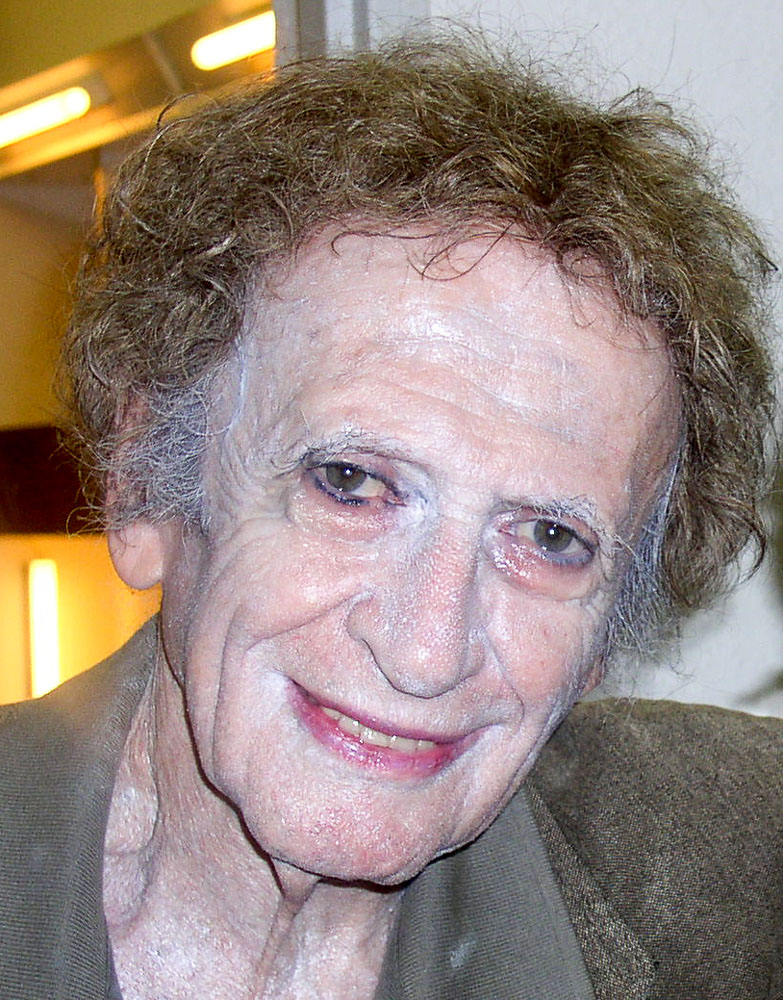
Honors
Marcel Marceau was awarded the Wallenberg Medal, Ordre des Arts et des Lettres, the Légion d’honneur, the Ordre nationale du Mérite, the Médaille Vermeil de la Villede Paris, and numerous honorary university degrees.
The Wallenberg Medal was awarded to Marcel in 2002 at the University of Michigan in Ann Arbor. This excerpt is from his acceptance speech: “We have a great responsibility for the legacy we have to give. If you don’t have a past, then you have no present and you have a fragile future. We have to keep the traditions. We have to know all nations have the right to live and carry on their legacy. This is why we have to pray for peace, so that our millennium now will be less cruel than the twentieth century. This is why with mime I create metaphors with the hands, a struggle between good and evil.”
Death
Marcel Marceau was at the racetrack in Cahors, France presumably silently cheering on his favorite horse when he died on 22 September 2007 and entered into eternal silence. The next time you are in Paris, please stop by Père Lachaise cemetery (Division 21) and pay your silent respects to Marcel Marceau.
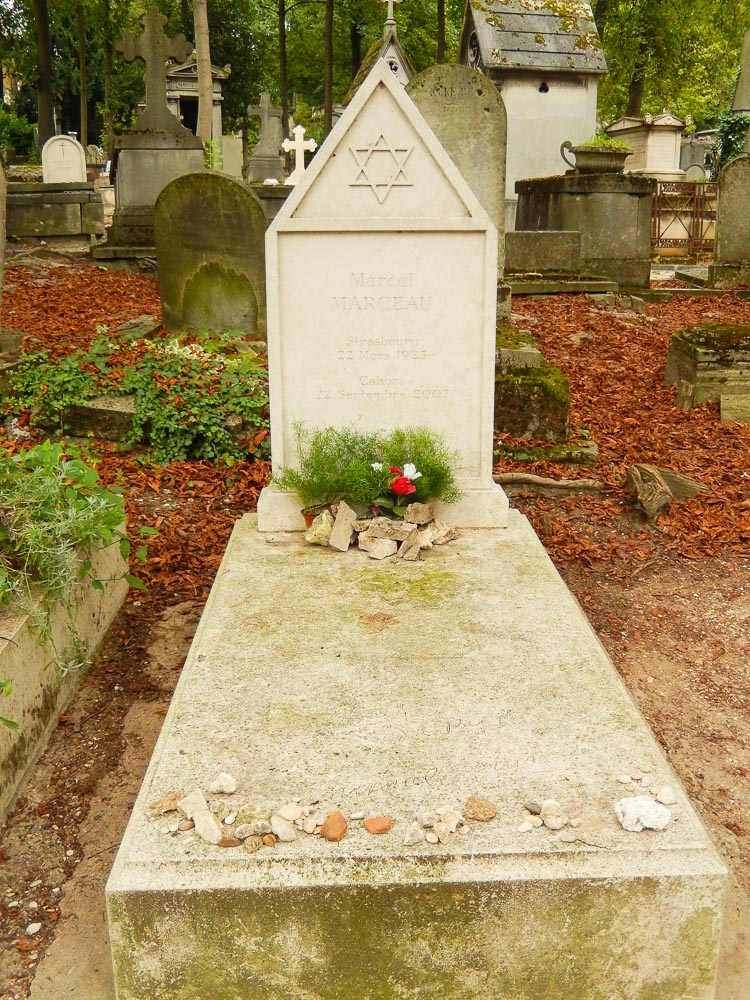
Recommended Reading and Viewing
Marceau, Marcel. The Story of Bip. New York: Harper & Row, 1976.
Martin, Ben.Marcel Marceau, master of mime. London: Paddington Press, 1978.
Schubert, Leda.Monsieur Marceau: Actor Without Words. New York: Roaring Brook Press, 2012. Hertzberg, Michael (Producer). Silent Movie. Crossbow Productions, 1976.
What’s New With Sandy and Stew?
I’m writing this blog less than twenty-four hours after Notre-Dame Cathedral burned. Regardless of one’s religious persuasion, we’ve lost a part of our soul. They will fix it.
Someone Is Commenting On Our Blogs
I’d like to thank Archie W. for contacting us in regard to our blog entitled, “Picasso’s Wartime Man Cave” (read here.) He spoke about Joan of Arc’ imprisonment in Rouen and a house she was supposed to have been questioned, tried, and condemned in. Sandy and I will definitely visit this house on our trip to Rouen. Thanks Archie!
For those of you interested in the French Resistance, I will be giving this lecture in November at the Renaissance Academy here in Punta Gorda. It is called Charles de Gaulle’s Legacy: The French Resistance. Check out our web site home page for the particulars. Perhaps you can join us?
If there is a topic you’d like to see a blog written about, please don’t hesitate to contact me. I love hearing from you so keep those comments coming.
Why Would You Want To Buy Our “Walks Through History” Books?
Simple.
You like to travel and experience history and historical events. You like to see original buildings that had a significant impact on the people and events of the history you’re engaged with. You want to know the stories behind the brick and mortar in front of you.
The walking tour books are meticulously researched so you can go directly to those sites and learn about the building’s history as well as an introduction to some of the more interesting people associated with it.
We need your help
Please tell your friends about our blog site and encourage them to visit and subscribe. Sandy and I are trying to increase our audience and we need your help through your friends and social media followers.
Thank You
Sandy and I appreciate you visiting with us. We have some exciting things on the horizon and we’ll keep you updated as we go along.
Share This:
Follow Stew:
Find Stew’s books on Amazon and iBooks.
Please note that we do not and will not take compensation from individuals or companies mentioned or promoted in the blogs.
Walks Through History

